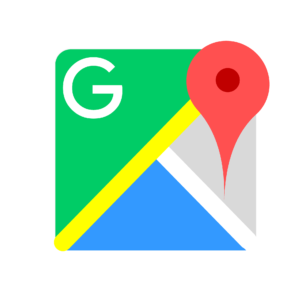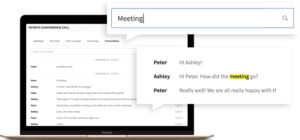We’ve witnessed an immense amount of growth in a particular sector over the past year: Artificial Intelligence. Since the release of Siri, Alexa, Google Home, and countless other voice-command AI assistants, we have become somewhat attuned to the idea of talking to computers.
The next step is to integrate them more seamlessly into our daily lives, so that they may continue to provide us with the advantages they’ve been designed to offer us. Here’s how Callbridge does it.
Who Are They?
Our friendly robotic aids are all around us, despite being hidden behind layers of everyday use. We have almost forgotten how advanced things have become, considering that we use them regularly and without thought.
They hide in our applications, on our software, in our checkout lines, and are built right into our daily lives. The majority of them are barely recognizable in the massive landscape of technology in which we live. Picture GoogleMaps, Uber, emails, and hospitals. What do they have in common? Artificial Intelligence.
What Can They Do?
Save Time
Take Google Maps for example. When planning routes, it is able to use data it collects from all active cell phones using Location Services, and can reroute you according to the data patterns that determine traffic, wait times and construction. In 2013, it acquired Waze’s platform, which allows users to report traffic and construction themselves, opening up another avenue of information with which to best prepare your final route.

The most impressive part of Google’s current mapping AI is its historically-based algorithms, which have stored years worth of data along major roads at specific times. This means that your phone can predict what the traffic will look like an hour before it occurs.
When you’re wondering what is the best way to get to your lake house on a Friday long weekend, checking Google Maps feels like a natural next step. The software behind it, however, far from natural, has been developed over years so you can make it North on time.
Save Money
Rideshare services have been growing in popularity, as fewer people in our cities drive their own cars, and transit fare prices are on the rise. Services like Uber and Lyft use machine learning (artificial intelligence) to determine the price of rides, minimize your wait time in hailing a car, and optimize your rideshare with other passengers.

The machine learning uses driver history, customer input, traffic data and daily driver statistics to customize your ride to work, and tailor it to the needs of the rider. Artificial Intelligence ensures that your ride is at the best price point the machine can offer you.
Save Our Information
Every time your electronic mail account receives a message from a spambot, it automatically filters that request. When outside sources are attempting to gain access to your personal information, your filters act quickly to protect your assets.

The scam culture has grown rapidly through the use of online banking information request forms, false advertising, and misrepresentation of identity. The artificial intelligence which comprises your spambots is always at work protecting your interests.
Save our Lives
Programming, machine learning and health professionals are teaming up to use artificial intelligence to develop new treatments, drug plans, and maintain quality of care across the world. Right now, the Mayo Clinic’s Centre for Individualized Medicine is teaming up with Tempus, a health tech start-up that focuses on developing personalized cancer care based on machine learning technology that analyzes molecular sequencing for immunotherapy.

Using computers to analyze data at a fraction of the time humans needs opens up the possibility of foreseeable advancement in treatment, as well as development of alternative treatment, since individualized data sets producing different results can affect the current data patterns. While it’s still in its R&D stage, Mayo is running a consortium of healthcare organizations that partnered with Tempus, including the University of Michigan, University of Pennsylvania, and Rush University Medical Centre.
How Can We Best Use Them?
The beauty of AI is how intuitive is has become, both to us, and with us. The best way to use Artificial Intelligence is to use it the way it was designed – to help you save time, work smarter, save money, and protect you.
Artificial Intelligence has been programmed to be as useful to its users as possible, and drawing your attention to the ways in which it enriches your life may be helpful to you, in trying to use it to its full advantages.
Intelligent Assistance
People often overlook virtual conferencing solutions as part of the technologic revolution. Here at Callbridge, we use artificial intelligence to boost your productivity, through the arrival of our latest feature, named Cue. She’s a huge part of our virtual conferencing system, and thus, of your overall experience.
Her programming ensures technologic continuity, data collection, sorting, and storage, offering intuitive features. Cue™ users receive automatic transcriptions of completed conferences, including speaker tags and time/date stamps, giving you a permanently stored, written record of all of your conferences.

While Cue™ automatically transcribes recordings, it distinguishes common topics frequently addressed in conversation, tagging meeting summaries for easy search. This means one can scour your entire database within seconds, using the predictive search assist.
Historical meeting information, such as recordings, summaries, and transcriptions are stored indefinitely using cloud technology.
Always On Call
Exercising a little gratitude every time your spam filter protects you from a Trojan virus or money-making scheme is a small price to pay, considering that our devices, and those who design their programs, are working tirelessly to help us stay alive, on budget, on time, and on track.

